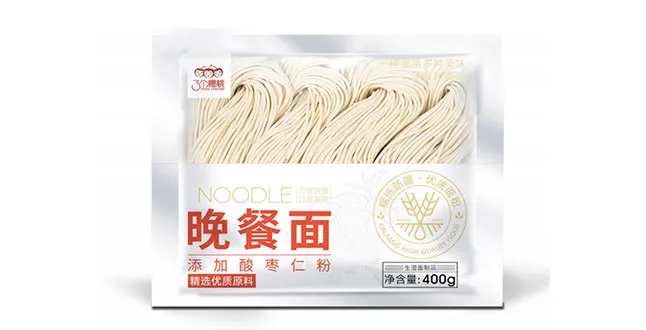Deliciously Unique Bamboo Noodles for a Flavorful Culinary Experience
Exploring the Delights of Bamboo Noodles
Bamboo noodles, an intriguing culinary creation, are a testament to the diverse and innovative world of cuisine. Originating from regions rich in bamboo resources, these noodles embody not only a unique taste but also a cultural significance that transcends mere sustenance. This article delves into the history, preparation, and nutritional benefits of bamboo noodles, while also exploring their increasing popularity in contemporary dining.
History and Cultural Significance
Bamboo is more than just a plant; it is a cultural emblem in many Asian countries. In places like China, Japan, and Thailand, bamboo has been used for centuries, not just as a building material or artistic medium, but also in cooking. The idea of using bamboo to create noodles stems from historical practices where indigenous people utilized local resources to create nourishing meals. The ancient craft of noodle making saw a fusion of traditional methods with local ingredients, leading to the invention of bamboo noodles.
In addition to their culinary roots, bamboo noodles are often associated with festivals and family gatherings. They are prepared during special occasions, reflecting the importance of community and family in many Asian cultures. The act of making these noodles often becomes a social event, where families come together to celebrate shared heritage and traditions.
Preparation Methods
Preparing bamboo noodles involves a careful process that retains the essence of the bamboo. Traditionally, young bamboo shoots are harvested, processed, and ground into a fine flour. This flour is then mixed with water to create a dough, which is rolled out and cut into thin strands. The result is a unique noodle with a slightly chewy texture and a delicate, earthy flavor that perfectly complements a variety of dishes.
bamboo noodles

Chefs and home cooks alike can experiment with bamboo noodles in various ways. They can be served in soups, stir-fried with vegetables and proteins, or even used in cold salads for a refreshing twist. The versatility of these noodles allows them to absorb the flavors of different sauces and ingredients, making them a favorite choice in many kitchens.
Nutritional Benefits
One of the most appealing aspects of bamboo noodles is their nutritional profile. Rich in fiber and low in calories, they offer a guilt-free alternative to traditional wheat-based noodles. Bamboo shoots are known for their high antioxidant content and potential health benefits, including improved digestive health and reduced cholesterol levels. Additionally, bamboo noodles are often gluten-free, making them a suitable option for those with gluten sensitivities.
In a world increasingly focused on health and sustainability, bamboo noodles stand out not just for their unique flavor, but also for their environmentally friendly nature. Bamboo is a fast-growing plant that absorbs carbon dioxide and requires minimal water compared to traditional crops. By incorporating bamboo noodles into our diets, we can appreciate the intersection of culinary delights and ecological responsibility.
Conclusion
Bamboo noodles represent more than just a meal; they are a symbol of tradition, sustainability, and innovation within the culinary world. Their unique preparation and health benefits make them an appealing choice for modern diners looking to explore new flavors while remaining conscious of their nutritional intake. As more people become aware of the wonders of bamboo noodles, it is likely that this delightful dish will find a permanent place in kitchens around the globe. Whether enjoyed in a warm broth or as part of a vibrant stir-fry, bamboo noodles offer a delicious journey through taste and culture that is well worth experiencing.
-
Unleash Your Inner Chef with Delectable Italian Pasta CreationsNewsAug.01,2025
-
Savor Health and Flavor: Irresistible Soba Noodles for Sale Await!NewsAug.01,2025
-
Nourish Your Body with Premium Organic Ramen - A Culinary Delight AwaitsNewsAug.01,2025
-
Elevate Your Dishes with Our Exquisite Kinds of Egg NoodlesNewsAug.01,2025
-
Dive into Flavorful Convenience with Our Ramen OfferingsNewsAug.01,2025
-
Discover Exquisite Types of Naengmyeon and Chilled Soba NoodlesNewsAug.01,2025
-
Is Whole Wheat Pasta Healthy?NewsMay.30,2025
Browse qua the following product new the we

















































































































